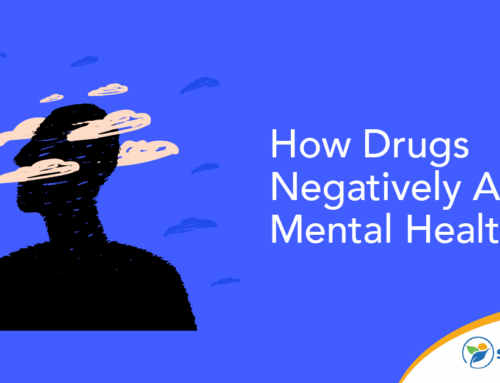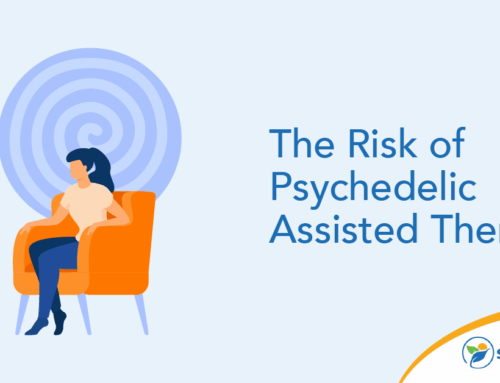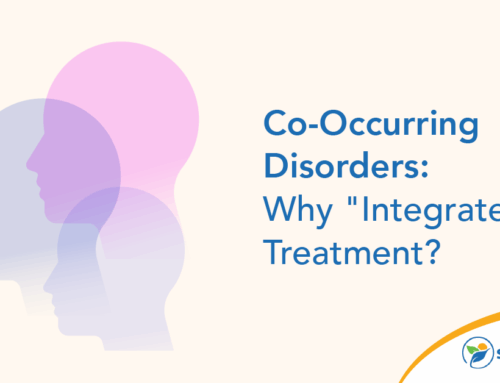Benzodiazepine or Valium withdrawals can be a challenging and complex medical experience, and they affect thousands of individuals struggling with benzodiazepine dependence. If you or a loved one is facing the prospect of discontinuing benzodiazepine medications, understanding the withdrawal process is crucial for safe and effective recovery.
What Causes Benzodiazepine Withdrawal?
Benzodiazepines are powerful medications that can quickly lead to physical and psychological dependence, making the withdrawal journey physically and emotionally demanding. This class of prescription medications is primarily used to treat anxiety, panic disorders, muscle spasms and seizures. These powerful central nervous system depressants enhance the effect of gamma-aminobutyric acid, a neurotransmitter that reduces brain activity and produces a calming effect.
Commonly prescribed benzodiazepines include Valium (diazepam), Xanax (alprazolam), Ativan (lorazepam) and Klonopin (clonazepam). While these medications can be incredibly effective for short-term management of acute medical conditions, they carry a significant risk of dependence. Physicians typically recommend short-term use due to their potential for creating physical and psychological addiction. The National Institutes of Health states that even when only taking prescribed therapeutic doses, people can become physically dependent on benzodiazepines after just 3 to 6 weeks.
Benzodiazepine withdrawal occurs when the body has become physically dependent on these medications and experiences a neurochemical imbalance upon reduction or cessation of use. Dependence can develop surprisingly quickly — even when taking medications exactly as prescribed. Several key factors contribute to the risk of withdrawal:
- Duration of medication use
- Dosage amount
- Individual metabolism
- Specific benzodiazepine type (such as Valium or lorazepam)
- Personal medical history
- Underlying mental health conditions
The complexity of withdrawal stems from multiple interconnected factors. The brain becomes accustomed to the sedative effects of benzodiazepines, creating a complex neuroadaptation that makes discontinuation challenging. The central nervous system develops a delicate dependency that requires a careful and methodical approach to interruption.
Typical Timeline for Benzodiazepine and Valium Withdrawals
The benzo withdrawal timeline follows a nuanced progression that varies for each individual, though withdrawal symptoms typically appear within 24 hours after stopping the drugs. Generally, the process unfolds through distinct phases that can be challenging and unpredictable. Initially, patients experience an acute withdrawal phase where symptoms are most intense and potentially overwhelming.
Individuals usually encounter the most significant challenges during the first 1 to 4 weeks. The peak of discomfort generally occurs within the first week, with symptoms often reaching their most severe point between 48 and 72 hours after the last dose. This acute phase represents a critical period that requires careful medical supervision and support.
The protracted withdrawal phase follows, spanning weeks to months. During this time, symptoms gradually diminish, though psychological symptoms might persist longer than physical manifestations. Some individuals experience intermittent symptoms that can extend up to a year, highlighting the deeply personal nature of benzodiazepine withdrawal.
Physical and Psychological Symptoms to Anticipate
Benzodiazepine withdrawal symptoms represent a complex interplay between the body’s neurochemical systems and its desperate attempt to readjust to functioning without benzodiazepines. These symptoms manifest differently for each individual, creating a unique and often unpredictable withdrawal experience. Think of the nervous system as a complex electrical grid that’s grown accustomed to a specific power supply. When that supply is suddenly altered or removed, the entire system experiences significant disruption.
The symptoms a person might encounter during withdrawal can be categorized into physical and psychological manifestations. These symptoms range from mild discomfort to potentially severe reactions, which is why medical supervision is critically important. The body and mind will essentially be recalibrating, working to reestablish their natural balance after becoming dependent on medication that artificially manipulates neurotransmitter responses. Lorazepam withdrawal symptoms can manifest in diverse and challenging ways, including:
Physical Symptoms
- Tremors and muscle spasms
- Headaches
- Sweating
- Increased heart rate
- Seizures
- Sleep disturbances
- Gastrointestinal issues
Psychological Symptoms
- Anxiety
- Depression
- Mood swings
- Cognitive difficulties
- Panic attacks
- Potential hallucinations
- Intense drug cravings
How to Safely Navigate the Withdrawal Process
Safely managing benzodiazepine withdrawal requires a comprehensive, medically supervised approach. The most critical first step is to never attempt to quit “cold turkey” under any circumstances, as this can result in life-threatening symptoms and long-term damage to the central nervous system. Instead, each individual should work closely with a health care provider to create a personalized tapering plan for their safety and successful recovery.
Medical professionals typically recommend incremental dose reductions that let the body adjust gradually. Some patients might even transition to longer-acting benzodiazepines during the withdrawal process to minimize shock to the nervous system. This strategy helps mitigate the most severe withdrawal symptoms while providing a more controlled approach to medication reduction.
Building a robust support system is equally critical. This involves engaging family and friends who can provide emotional support, considering participation in support groups and potentially exploring therapeutic counseling to address physical and psychological challenges.
Lifestyle modifications can also significantly impact the withdrawal experience. Maintaining consistent sleep schedules, practicing stress-reduction techniques, ensuring balanced nutrition, staying hydrated and engaging in moderate exercise can all contribute to a more manageable withdrawal process.
Additional Considerations for Safe Withdrawal
Some individuals might experience more complex withdrawal scenarios. Factors including long-term use, high dosages or co-occurring mental health conditions can complicate the process. In such cases, medical professionals might recommend temporary alternative medications, symptom management pharmaceuticals or comprehensive psychiatric evaluation.
Take the First Step Toward Recovery
Benzodiazepine withdrawal is a challenging but manageable process with proper medical supervision and personal commitment. Understanding the potential symptoms and preparing strategically can significantly improve the withdrawal experience.
Reach Out Today
Are you or a loved one struggling with benzodiazepine dependence? Sunlight Recovery in South Florida offers comprehensive, compassionate addiction treatment programs designed to support you through every stage of withdrawal and recovery. Our experienced medical professionals provide personalized care to ensure your safety and comfort. Contact us today for a confidential consultation to discuss our individualized treatment plans, medically supervised withdrawal services and comprehensive support.







